虚拟主机使用的是特殊的软硬件技术,它把一台运行在因特网上的服务器主机分成一台台“虚拟”的主机,每台虚拟主机都可以是一个独立的网站,可以具有独立的域名,具有完整的Intemet服务器功能(WWW、FTP、Email等),同一台主机上的虚拟主机之间是完全独立的。从网站访问者来看,每一台虚拟主机和一台独立的主机完全一样。

利用虚拟主机,不用为每个要运行的网站提供一台单独的Nginx服务器或单独运行一组Nginx进程。虚拟主机提供了在同一台服务器、同一组Nginx进程上运行多个网站的功能。
配置虚拟主机有三种方法:
-
基于域名的虚拟主机 : 不同的域名、相同的IP(此方式应用最广泛)
-
基于端口的虚拟主机 : 不使用域名、IP来区分不同站点的内容,而是用不同的TCP端口号
-
基于IP地址的虚拟主机 : 不同的域名、不同的IP ( 需要加网络接口 ,应用的不广泛) 基于IP地址

方式一:多网卡多IP
两个物理网卡,两个IP
# 两张物理网卡ens32和ens34
[root@nginx network-scripts]# ifconfig ens32 | awk 'NR==2 {print $2}'
192.168.126.41
[root@nginx network-scripts]# ifconfig ens34 | awk 'NR==2 {print $2}'
192.168.126.42
|
编辑配置文件,基于每个IP创建一个虚拟主机
# 为防止 /etc/nginx/conf.d/default.conf 配置文件影响,对其进行重命名
[root@nginx ~]# mv /etc/nginx/conf.d/default.conf /etc/nginx/conf.d/default
[root@nginx ~]# vim /etc/nginx/conf.d/ip.conf
# ens32网卡对应的虚拟主机
server {
listen 192.168.126.41:80;
location / {
root /ip_ens32;
index index.html;
}
}
# ens34 网卡对应的虚拟主机
server {
listen 192.168.126.42:80;
location / {
root /ip_ens34;
index index.html;
}
}
|
创建虚拟主机的网页文件目录及文件
[root@nginx ~]# mkdir /ip_ens32
[root@nginx ~]# mkdir /ip_ens34
[root@nginx ~]# echo "ens32" > /ip_ens32/index.html
[root@nginx ~]# echo "ens34" > /ip_ens34/index.html
|
检查配置文件的语法
[root@nginx ~]# nginx -t
nginx: the configuration file /etc/nginx/nginx.conf syntax is ok
nginx: configuration file /etc/nginx/nginx.conf test is successful
|
重载nginx服务
[root@nginx ~]# systemctl reload nginx
|
测试
[root@nginx ~]# curl 192.168.126.41
ens32
[root@nginx ~]# curl 192.168.126.42
ens34
|
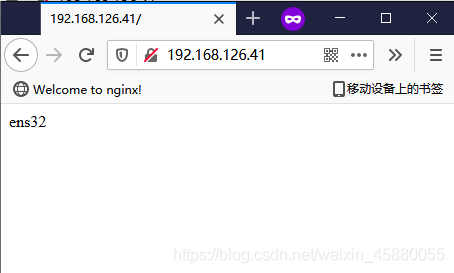 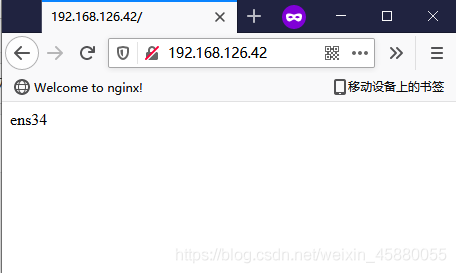
方式二:单网卡多IP
为一个物理网卡配置多个ip
ip addr add IP/MASK dev 网卡名
# 删除
ip addr del IP/MASK dev 网卡名
|
其余步骤同上面多网卡多IP的配置
基于端口

多使用于公司内部,无法使用域名或没有域名时
配置
[root@nginx ~]# vim /etc/nginx/conf.d/port.conf
server {
listen 81;
location / {
root /port_81;
index index.html;
}
}
server {
listen 82;
location / {
root /port_82;
index index.html;
}
}
[root@nginx ~]# mkdir /port_{81..82}
[root@nginx ~]# echo "81" > /port_81/index.html
[root@nginx ~]# echo "82" > /port_82/index.html
[root@nginx ~]# nginx -t
nginx: the configuration file /etc/nginx/nginx.conf syntax is ok
nginx: configuration file /etc/nginx/nginx.conf test is successful
[root@nginx ~]# systemctl reload nginx
|
测试
[root@nginx ~]# curl 192.168.126.41:81
81
[root@nginx ~]# curl 192.168.126.41:82
82
|
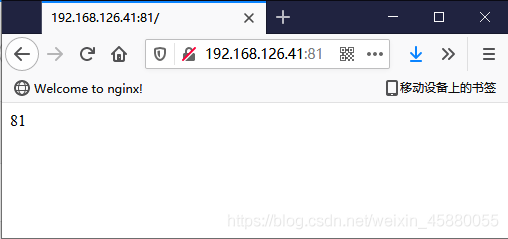 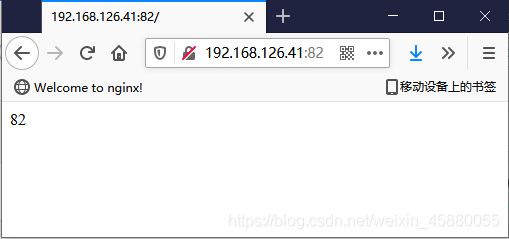
基于域名

配置
一般一个域名对应一个配置文件,便于管理
[root@nginx ~]# vim /etc/nginx/conf.d/test1.dxk.com.conf
server {
listen 80;
server_name test1.dxk.com;
location / {
root /test1;
index index.html;
}
}
[root@nginx ~]# vim /etc/nginx/conf.d/test2.dxk.com.conf
server {
listen 80;
server_name test2.dxk.com;
location / {
root /test2;
index index.html;
}
}
[root@nginx ~]# mkdir /test{1..2}
[root@nginx ~]# echo "test1" > /test1/index.html
[root@nginx ~]# echo "test2" > /test2/index.html
[root@nginx ~]# nginx -t
nginx: the configuration file /etc/nginx/nginx.conf syntax is ok
nginx: configuration file /etc/nginx/nginx.conf test is successful
[root@nginx ~]# systemctl reload nginx
|
测试
# 配置域名解析
[root@nginx ~]# echo -e "192.168.126.41 test1.dxk.com
192.168.126.41 test2.dxk.com" >> /etc/hosts
[root@nginx ~]# cat /etc/hosts
127.0.0.1 localhost localhost.localdomain localhost4 localhost4.localdomain4
::1 localhost localhost.localdomain localhost6 localhost6.localdomain6
192.168.126.41 test1.dxk.com
192.168.126.41 test2.dxk.com
[root@nginx ~]# curl test1.dxk.com
test1
[root@nginx ~]# curl test2.dxk.com
test2
|

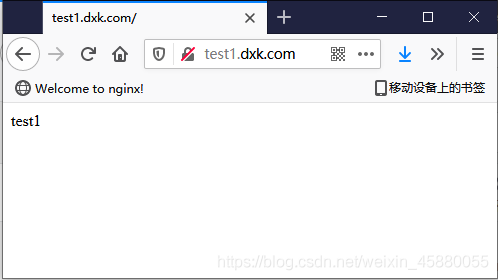
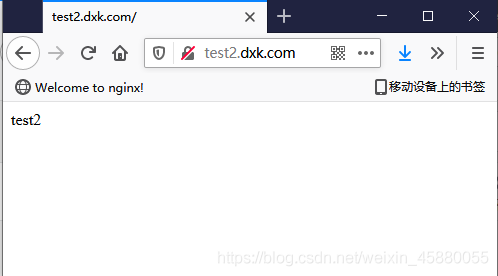
这里有个问题:
如果在配置域名解析时由于写错了,那么访问该错误域名(未配置该错误域名的虚拟主机)时竟然还会返回网页内容。
[root@nginx ~]# vim /etc/hosts
192.168.126.41 test1.dxk.com
192.168.126.41 test3.dxk.com # 这里本应该是 test2.dxk.com ,但是由于写错了,而且对应test3.dxk.com域名的虚拟主机并不存在
|
访问该错误域名
[root@nginx ~]# curl test3.dxk.com
test1
# 可以看到,还是会返回网页信息
|
因为在配置域名解析时,虽然域名写错了,但是IP是对的,那么此时服务端默认会返回满足是该IP且端口为80的排在第一个的虚拟主机的网页信息给客户端
[root@nginx ~]# ll /etc/nginx/conf.d/
-rw-r--r--. 1 root root 112 Jul 3 21:23 test1.dxk.com.conf
-rw-r--r--. 1 root root 112 Jul 3 21:22 test2.dxk.com.conf
|
这是需要注意的
|